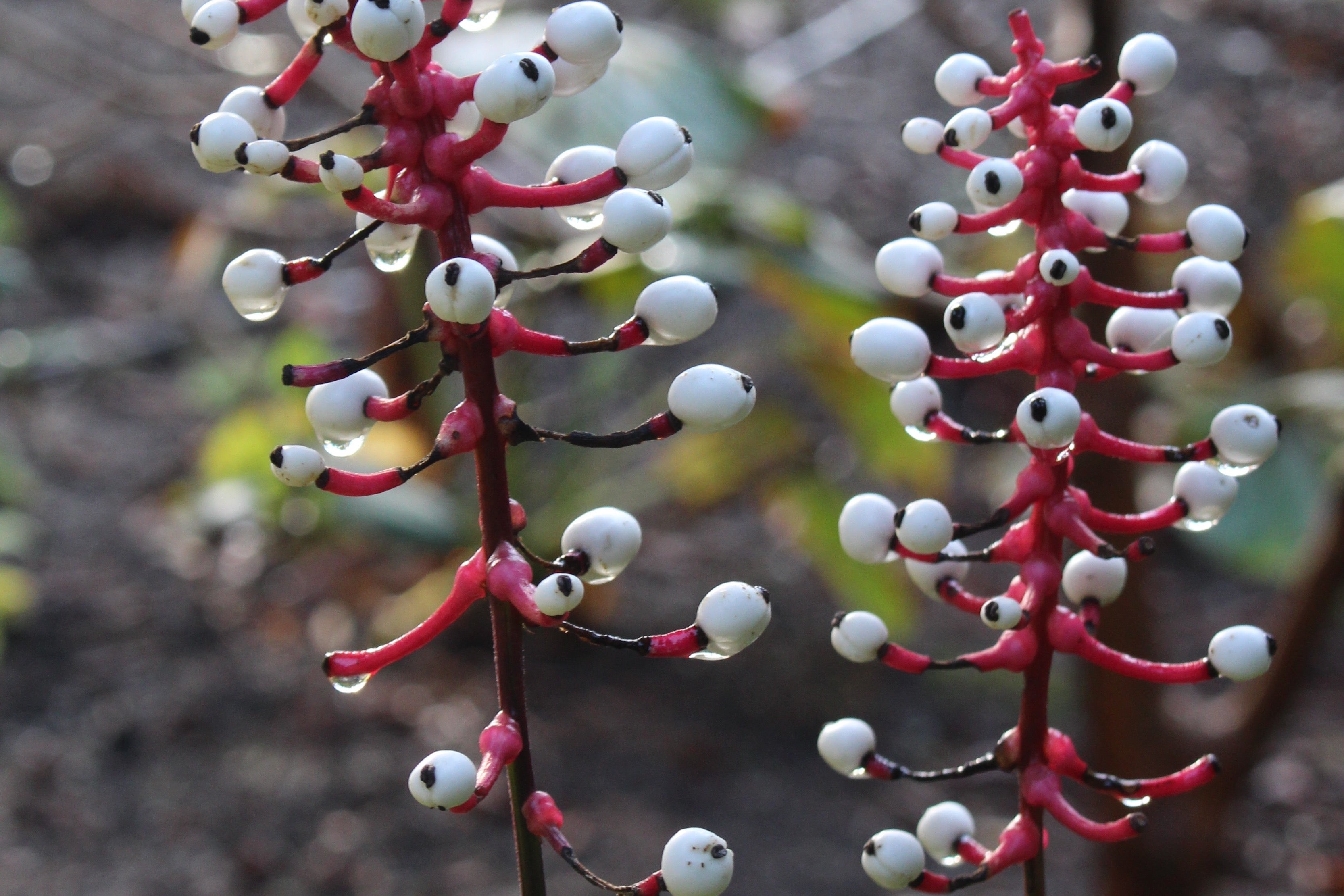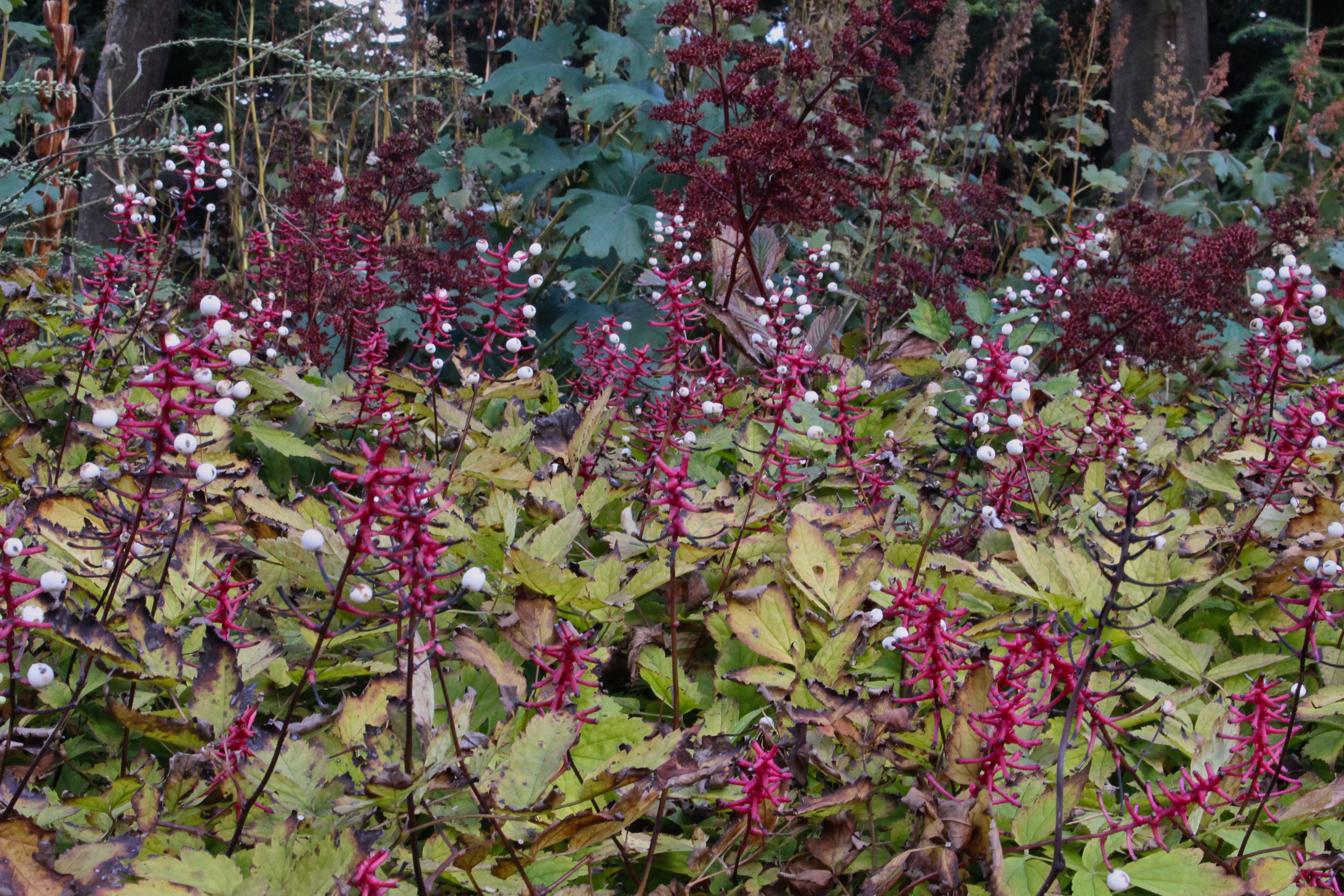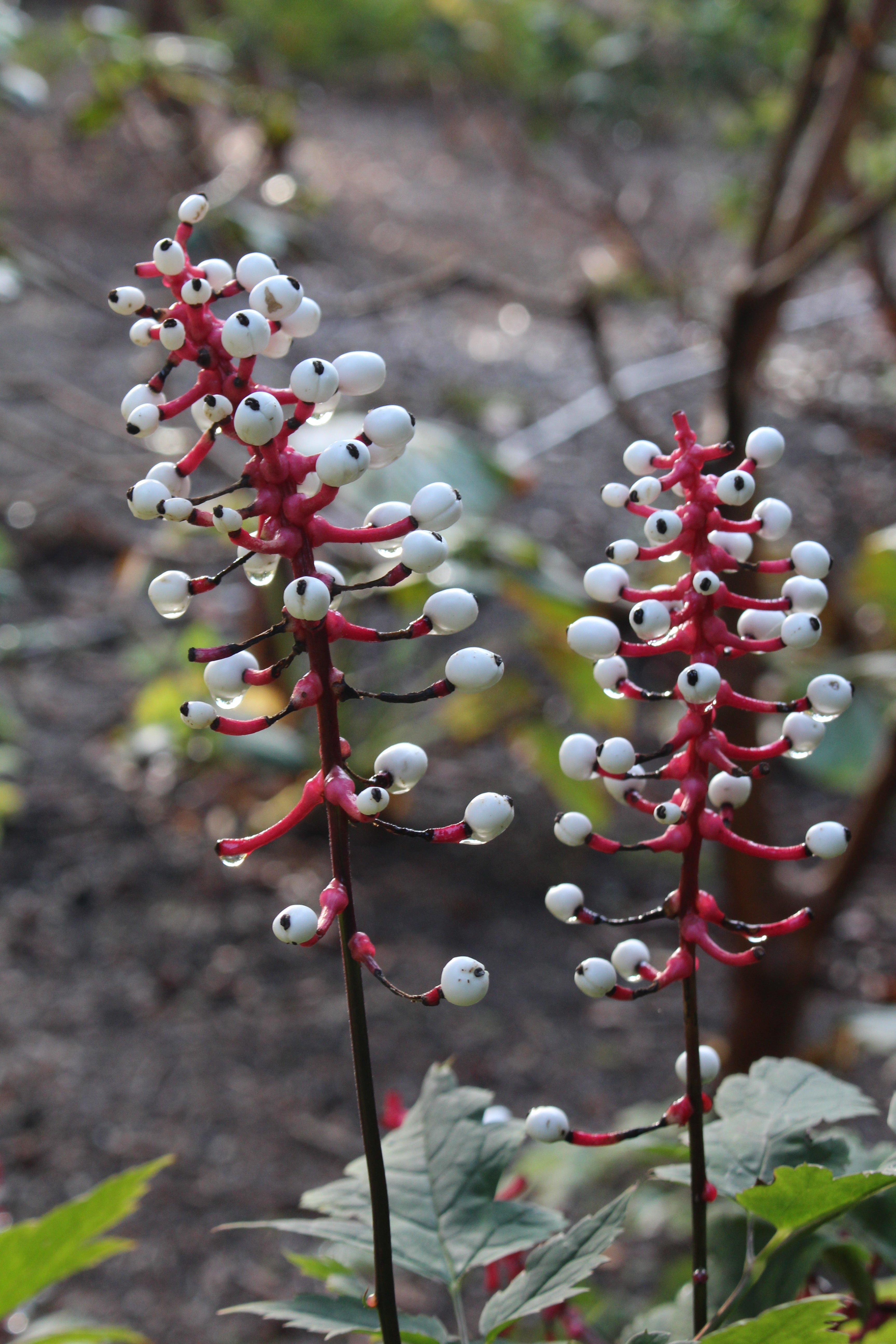Actaea pachypoda
Approx. 0.5 litre pot
About this cultivar:
Actaea pachypoda produces white flowers in spring on a dense raceme (flower cluster with central stem) commonaly called white baneberry. Its most striking feature is its fruit, a white berry, whose size, shape, and black stigma scar give the species its other common name, 'doll's eyes'. I think it looks a bit like a space alien. What is the botantical latin for space alien?
The pedicels (stalks of an individual flower) on which the berries grow are thicker than those of the related species, red baneberry (Actaea rubra). This is the reason for the species name pachypoda, which means 'thick foot', from Ancient Greek pakhús (thick) and poús (foot). The pedicels thicken and become bright red as the berries develop.
A fun plant!
- Position: Full sun, partial shade (better in partial shade)
- Soil: Almost any soil (that isn't too dry) - grows well in Ballyrobert!
-
Flowers: May, June, July (berries/alien eyes in Autumn)
- Other features: Interesting Foliage or Fruit
- Hardiness: H7 - Hardy in the severest European continental climates (< -20°C), Fully hardy - grows well in Ballyrobert!
- Habit: Bushy, Columnar or Upright
- Foliage: Deciduous
- Height: 45 to 75 cm (1.5 - 2.5 ft)
- Spread: 30 to 60 cm (1 - 2 ft)
- Time to full growth: 2 to 5 years
- Plant type: Herbaceous Perennial
- Colour: White, red, green
- Goes well with: Ferns (Dryopteris, Polystichum and Polypodium), Heucheras and glossier grasses such as Hackencloa. Rodgersia, Anemones, Fuchsias, Hydrangeas.
About this genus:
Actaea are herbaceous perennials, many of which were known as Circimifuga from 1732 (when John Bartram discovered the plant) until 2000 when DNA evidence discovered Circimifuga were also Actaea. Whatever you call them, Actaea have a majestic frame - tall and graceful - with dark straight stems. The leaves are often matt shades of the dark bronze-black-brown, but can also be glossy or green.Depending on the cultivar the fragrant flowers can be delicate white, cream or pale pink, and are tightly packed on dreamy spikes. This foliage, flower, and fragrance combination undoubtedly makes it a favorite in our garden at Ballyrobert and we think it should be in every garden.
You're often told Actaea prefer part shade or full shade and thrive in cooler, moist areas. However we grow one in an old bath in the middle of our yard! (I think by definition the climate in the British Isles is never full-sun). If too dry their leaves scorch, if too sunny the leaves bleach. Difficult to propagate since they don't like being disturbed and are quite slow growing. The simplex species tends to flower in later Autumn. The Atropurpurea Group typically have purple to bronze tinted foliage
In the garden Actaea tend to be used for their foliage and look great mixed with other foliage plants such as ferns (Dryopteris, Polystichum, and Polypodium), Heucheras, and glossier grasses such as Hakonechloa. Flower-wise Actaea also work well with Anemones, Fuchsias, and even some Hydrangeas.








